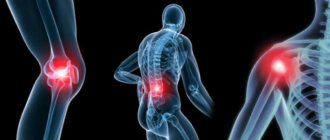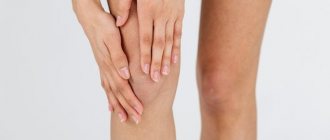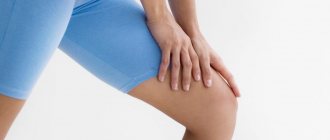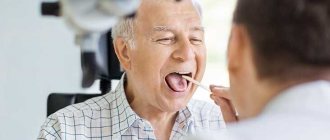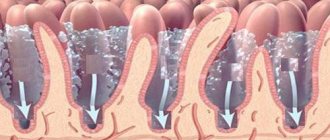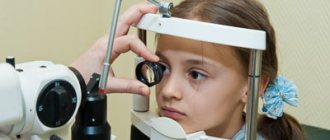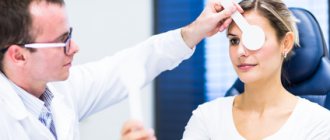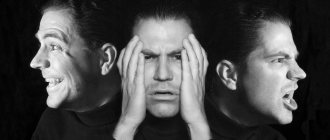Lordosis is usually understood as a physiological or pathological curvature of the spinal column, the convexity of which is directed anteriorly. The disease is manifested by pain in the back and impaired posture of a person.
Diagnostics is carried out on the basis of an initial examination of the patient, as well as the results of radiography.
Treatment of lordosis is predominantly conservative, however, in various situations, radical methods (surgical intervention of varying degrees of complexity) can be used.
What is spinal lordosis?
Lordosis is a physiological or pathological curvature of the spinal column in the anteroposterior direction with a characteristic convexity that faces predominantly anteriorly.
Physiological lordosis of the spine forms in the first year of a person’s life, while the pathological type of the disease can form at any age, being the result of a congenital or acquired pathology.
In advanced cases, the patient may experience difficulty and serious disruption of the functioning of internal organs.
Characteristic
Physiological lordosis is a deflection of the bone support of the body, intended by nature. It allows you to keep your body in good shape and easily endure any load. With normal development, a person has 4 curvatures:
- In the neck area.
- In the thoracic region.
- In the lower back.
- Sacral flexure.
Normally, a person should not experience lateral curvatures; here the column is straight. In addition to understanding what physiological lordosis is, you should know what influences its formation. In this process, a large role is played by: the pelvic girdle, shoulders, and muscular frame. The natural curvature of the ridge develops in the first year of life and allows a person to walk normally on two legs, easily bend over to pick up a fallen object, keep his head level and absorb shocks that arise when walking.
Causes of lordosis
Among the main causes of primary type lordosis, it is customary to distinguish pathological processes, including:
- congenital and acquired malformations;
- neoplasms and inflammatory foci in the vertebral area;
- spasms;
- spinal injuries.
The causes of secondary type lordosis are considered to be factors such as:
- loss of joint mobility;
- congenital hip dislocation;
- pathologies of the musculoskeletal system of a systemic nature;
- spastic paresis of the lower extremities;
- pregnancy.
It is also important to note that among the additional factors predisposing to pathology, which may be the causes of lordosis, it is also customary to name:
- poor posture;
- excess body weight, with localization of adipose tissue on the abdomen;
- a sharp growth spurt during childhood and adolescence.
Regardless of the causes of lordosis and its type, the center of gravity of the human body with the presence of pathology is shifted predominantly forward.
Types
Lumbar lordosis
Normal lordotic curves, also known as secondary
curvatures lead to a difference in thickness between the anterior and posterior parts of the intervertebral disc. Lordosis can also worsen during puberty, sometimes not appearing until the early to mid 20s.
In radiology, a lordotic appearance
is an x-ray taken by the patient leaning in the opposite direction.
Lumbar hyperlordosis
Lumbar hyperlordosis
Lumbar hyperlordosis
is a condition that occurs when the lumbar region (lower back) experiences stress or excess weight and arches to the point of muscle pain or spasms. Lumbar hyperlordosis is a common position in which the natural curve of the lumbar region of the back is slightly or sharply emphasized. Commonly known as swaying, it is common among dancers. Imbalances in muscle strength and length are also a cause, such as weak hamstrings or tight hip flexors (psoas). The main symptom of lumbar hyperlordosis is an anterior tilt of the pelvis, causing the pelvis to sit on top of the hips.
Other conditions and health problems can cause hyperlordosis. Achondroplasia (a condition in which bones grow abnormally, which can lead to short stature, as in dwarfism), spondylolisthesis (a condition in which the vertebrae move forward), and osteoporosis (the most common bone disease, in which loss of bone density leads to weak bones and increased likelihood of fracture) are among the most common causes of hyperlordosis. Other causes include obesity, hyperkyphosis (a spinal curvature disorder in which the curvature of the chest is abnormally round), discitis (inflammation of the intervertebral disc caused by infection), and benign juvenile lordosis. Other factors may also include those who have rare conditions, as is the case with Ehlers-Danlos syndrome (EDS), where joints are hyperextended and usually unstable (such as joints that are problematically more flexible, often to the point of partial or complete dislocation) quite common throughout the body. With such hyperextensibility, it is also quite common (if not the norm) to find the muscles surrounding the joints to be the main source of compensation when such instability exists.
Excessive lordotic curvature - lumbar hyperlordosis, also called "hollow back" and "saddleback" (from a similar condition that occurs in some horses); Deviation usually refers to an almost opposite shift in posture, which may initially look very similar. Common causes of lumbar hyperlordosis include tight lower back muscles, excess visceral fat, and pregnancy. Rickets, a vitamin D deficiency in children, can cause lumbar hyperlordosis.
Lumbar hypolordosis
Hypolordosis (also known as flat back) is less common than lumbar hyperlordosis, where there is less curve in the lower back or flattening in the lower back. This occurs because the vertebrae are oriented toward the back of the spine, stretching the disc toward the back and compressing it at the front. This can cause the opening for the nerves to narrow, which can lead to pinching.
Types of spinal lordosis
Traumatology and orthopedics determines several current classifications of curvature of the spinal column of the presented type, according to several criteria. Let's look at the most common of them.
By location:
- cervical lordosis;
- lumbar lordosis.
Due to the occurrence:
- primary – developing against the background of various kinds of pathological processes localized directly in the tissues of the spinal column;
- secondary – having a compensatory nature and arising as a result of attempts to maintain balance.
By form:
- physiological;
- excessive pathological (hyperlordosis);
- straightening (hypolordosis).
If possible, give the spine a natural position:
- unfixed – the patient’s conscious effort allows him to straighten his back;
- partially fixed – limited change in the existing angle is possible;
- fixed – returning to the natural position is impossible.
Definition
At the bottom of the ridge there is a bend directed inward, which is called lordosis. Any deviation from the norm, excessive deepening or, on the contrary, insufficient, is a serious pathology. If the lumbar lordosis is smoothed, then we are talking about hypolordosis. It is clearly visible to the naked eye, as it forces a person to lean forward strongly, as if in a slight bow. The condition most often develops against the background of ankylosing spondylitis, osteochondrosis or intervertebral hernia.
There are two types of the disease:
- Primary. Its etiology is non-traumatic. A degenerative change has appeared as a result of inflammatory or oncological processes in the spine or surrounding muscles.
- Secondary. Develops as a result of injury, dislocation or other damage to the pelvis or spine in any area.
What does “flattened lordosis” mean? This is a complete or partial absence of the natural curve of the spine in the lumbar region. Normally, it appears at six months, when the child learns to sit and maintains this position throughout life. The angle of curvature should be within 150-170 degrees. Any negative factors can affect it and lead to excessive bending and flattening, where the ridge straightens unnaturally.
Symptoms of lordosis
The key manifestation of cervical or lumbar lordosis, as well as other forms of this disease, is a change in a person’s posture, accompanied by increased fatigue and pain localized in the affected part of the spine.
Other symptoms include:
- excessive head tilt;
- a large gap between any part of the spine and a hard surface in the “lying” position;
- limited ability to perform simple motor actions;
- pain and discomfort;
- constant feeling of fatigue;
- disruption of internal organs.
Symptoms
The curvature of the spine practically does not manifest itself at first, and can only be diagnosed by a specialist at the next examination. But it is at this stage that it is easiest to correct. Gradually, the curvature affects the posture, it changes not for the better. In addition, the patient may notice the following signs:
- Increased fatigue.
- Pain in the affected area.
- Limitations when performing physical activities.
- Pain in the kidneys or intestines.
- Compression in the spinal cord.
- Increasing all curves in the body.
- Protruding shoulder blades.
- Increased pain during menstruation.
- Protruding belly.
Violation of the natural shape of the spine leads to the fact that the load is forced to be redistributed to the muscles, ligaments and bones not only of the back. Because of this, they are constantly under increased tension, stretched, and injured. The patient feels tired, lethargic, gets tired quickly, even from light exertion. As a result, this leads to the development of intervertebral hernias, decreased stability of the vertebrae and discs, loss of the latter and the appearance of deforming arthrosis.
Diagnostic methods
The diagnosis and treatment of lordosis is carried out by highly specialized specialists: orthopedists and vertebrologists. The diagnosis is made based on the collected medical history, as well as the results of the examination and radiography.
During a visual examination, the doctor assesses the naturalness of the patient’s body position, the characteristics of his posture, and also conducts a number of specific tests in order to establish the type of pathology and the presence of accompanying neurological disorders.
X-ray is a key research method that allows you to confirm or refute the presence of a pathological process. In order to obtain the most effective results, an X-ray of the spine is used in several projections (direct/lateral).
To determine the degree of lordosis, an X-ray is taken in a situation of maximum extension/flexion of the back, in parallel with which an assessment of the mobility of the spine in various planes is carried out.
Treatment of lordosis
The course of treatment is determined with the participation of treating specialists, namely a vertebrologist and an orthopedist. In order to achieve the most successful result, the therapy is comprehensive, and constant supervision by a specialist is preferable throughout all stages of its implementation.
The treatment program may include activities such as:
- physiotherapeutic procedures;
- manual therapy and medical massage;
- wearing corsets and specialized bandages;
- drug therapy;
- kinesio taping;
- therapeutic physical education (therapeutic physical education);
- surgical intervention.
All procedures used are aimed at relieving pain, relieving inflammatory processes and, of course, uniformly distributing the load on the parts of the spinal column.
Physiotherapeutic treatment
Physiotherapeutic treatment methods are widely applicable in eliminating lordosis, but are used exclusively in combination with other interventions.
The most important methods of physiotherapy are exposure to the affected area with ultrasound and microcurrents. A particularly beneficial effect is observed when exposed to electrophoresis and cryoprocedures.
Massage
The use of massage is permissible only after consultation with the attending physician.
The main massage techniques are stroking and vibration. The first days the procedure involves only these techniques, and only in the second week light superficial squeezing, rubbing and kneading techniques are added.
The average session duration should not exceed 20 minutes. It is important to work along the spine. It is recommended to use massage in courses of 15 sessions, alternating procedures every other day.
Wearing a corset and bandages
The use of a special corset is especially important in the treatment of lumbar lordosis, which allows you to maintain the optimal condition of the spinal column and strengthen the muscular frame.
Wearing a corset and other supporting structures is permissible only if prescribed by a doctor. The length of the product is determined by the existing angle of curvature and the characteristics of the clinical course of the disease.
Corsets are a means of treatment, and bandages are an auxiliary solution that allows for complete treatment.
Treatment of lordosis with medications
Drug therapy is an integral part of complex treatment. Properly selected drugs make it possible to stop the inflammatory process and completely relieve the patient’s pain.
As part of therapy, the following groups of drugs are used:
- anti-inflammatory;
- muscle relaxants;
- analgesics;
- vitamin and mineral complex;
- chondroprotectors.
A particularly important category of drugs are chondroprotectors, which promote the regeneration of cartilage tissue and maintain its optimal condition. Among them, the drug “Artracam” is considered to be the most effective.
Surgical intervention
Surgical intervention belongs to the category of radical treatment methods, the prescription of which is used in a situation where the functioning of internal organs and systems is disrupted, and the disease is not amenable to conservative treatment.
The key task of doctors is surgery to correct the curvature of the spinal column with its further fixation in an optimally comfortable position.
Surgical intervention is used extremely rarely, since it eliminates only the consequences, and not the cause of the development of the disease. In rare cases, the only correct solution is to replace the damaged vertebra with an implant, which makes it possible to restore the mobility of the spinal region.
As a result of the surgical intervention, there is a long recovery period, which requires close supervision of the attending physician and reaches one and a half years.
Therapeutic physical education (PT) in the treatment of lordosis
Clinical studies conducted in 2021 proved the effectiveness of gymnastic exercises for back curvature.
Exercise therapy occupies a special place in the complex treatment of spinal pathologies. It is through the systematic implementation of a set of exercises selected by the attending physician that patients have the opportunity to prevent the development of changes in the functioning of internal organs.
Gymnastic exercises are selected in accordance with the existing curvature, as well as taking into account the general health of the patient and his level of physical fitness.
It is best to do exercise therapy in a calm environment, under the close supervision of a specialist. Swimming or going to the gym will help increase the effectiveness of gymnastics.
Who will treat you
Karavaev Nikolay Nikolaevich
Chiropractor, Osteopath, Neurologist, Neurosurgeon
Read more
Dremin Evgeniy Vitalievich
Neurologist, reflexologist, chiropractor.
More details
Prognosis and complications
The prognosis for the development of pathologies of the musculoskeletal system can always be different, however, it remains predominantly favorable. The development of pathological processes proceeds quite slowly, which makes it possible to diagnose them and treat them before the development of critical complications.
Failure to contact your doctor in a timely manner, as well as a complete refusal or partial deviation from the established treatment plan can cause various types of complications.
The progression of the curvature leads not only to an increase in visually noticeable signs of the disorder, but also to increased discomfort and pain, which is caused by the destruction of cartilage tissue.
In a situation where the thoracic spine is affected and the chest is subject to deformation, disturbances in the functioning of internal organs may develop. In advanced cases, the functioning of the diaphragm is disrupted, which reduces lung capacity.
What is the danger of the disease
The spine is the foundation of the entire body. Any of its pathological changes have a detrimental effect on the functioning of individual organs and the body as a whole. Mainly organs in those areas where the curvature is localized are affected. Problems also affect the spine. Inflammation of the vertebrae, their destruction, prolapse, the appearance of hernias, osteochondrosis, deforming arthrosis with subsequent loss of performance are possible.
Prevention of lordosis
Prevention is a set of measures that is an opportunity available to every person to prevent the development of a disease.
Among the preventive measures to prevent the occurrence of pathological curvature of the spine, it is customary to highlight the following:
- developing the habit of constant posture control;
- dosage of physical activity;
- adherence to the principles of proper nutrition;
- strengthening and maintaining an optimal level of immunity;
- limiting the load on the spine, avoiding heavy physical work;
- wearing exclusively correct orthopedic shoes;
- use of high-quality mattresses and pillows for night rest;
- preventive intake of a vitamin-mineral complex (after consultation and clarification of the course of treatment with the attending physician);
- systematic planned visits to highly specialized specialists;
- timely treatment of various types of diseases and injuries.
Accurate diagnosis and quality treatment are the main priorities in the treatment of diseases of the musculoskeletal system. Remember about preventive measures and do not bring illnesses to a critical state.
Consequences
The development of lordosis at the chest level poses a danger to the body:
- decreased tidal volume of the lungs;
- difficult heart function;
- the likelihood of kidney prolapse;
- pain between the ribs due to their deformation;
- decreased shock absorption properties of the spine;
- increased fatigue, intolerance to heavy loads;
- deterioration of nerve conduction of organs.
Health problems can also arise with the development of hyperlorosis, which also requires the attention of a specialist.
